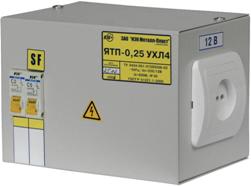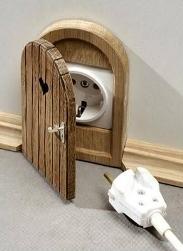Categories: Featured Articles » Novice electricians
Number of views: 21123
Comments on the article: 1
Low voltage application
 The use of low voltages is the best protection against electric current. Small voltages are in the range of 12 volts - 42 volts.
The use of low voltages is the best protection against electric current. Small voltages are in the range of 12 volts - 42 volts.
Such a need arises when using portable power receivers, as well as for lighting particularly hazardous rooms, in outdoor electrical installations.
Batteries and rectifiers, single-phase transformers, whose power is small, can serve as sources of low voltage. Do not use resistors or chokes to reduce the voltage.
Low-power step-down transformers are available both for installation on machines and portable. The flexible wire for connecting to the network must have a portable transformer. The wire must be enclosed in a sheath made of rubber or polyvinyl chloride, and also have a plug that is used to connect to a reliable power outlet. The socket can be installed on the switchboard in the switchgear, or in the workshop in the application areas.
At step-down transformers secondary windings must be earthed. This is due to the fact that there is a danger of damage to the transformer itself during the transition of a higher voltage to a lower one.
 This circuit has a drawback. Indeed, in the event of a short to ground or to the case, the conductors (grounding) are under some voltage until the damaged area is disconnected. Under this voltage are all grounded parts. Many believe that this situation is not dangerous. All this can be avoided if used. isolation transformers.
This circuit has a drawback. Indeed, in the event of a short to ground or to the case, the conductors (grounding) are under some voltage until the damaged area is disconnected. Under this voltage are all grounded parts. Many believe that this situation is not dangerous. All this can be avoided if used. isolation transformers.
They are subject to increased requirements. Damage to the insulation inside the transformer itself should be excluded when voltage is transferred from the primary side to the necessary secondary side. The use of isolation transformers is associated with a simultaneous decrease in voltage, as well as with voltage separation.
The use of isolation transformers leads to improved safety conditions. They are much more efficient than when powered directly from the network, as well as using step-down transformers, where the secondary windings are earthed.
It is constantly necessary to monitor the insulation status of transformers, wires of the secondary network and power consumers. This control prevents single-phase short circuits.
See also at e.imadeself.com
:
